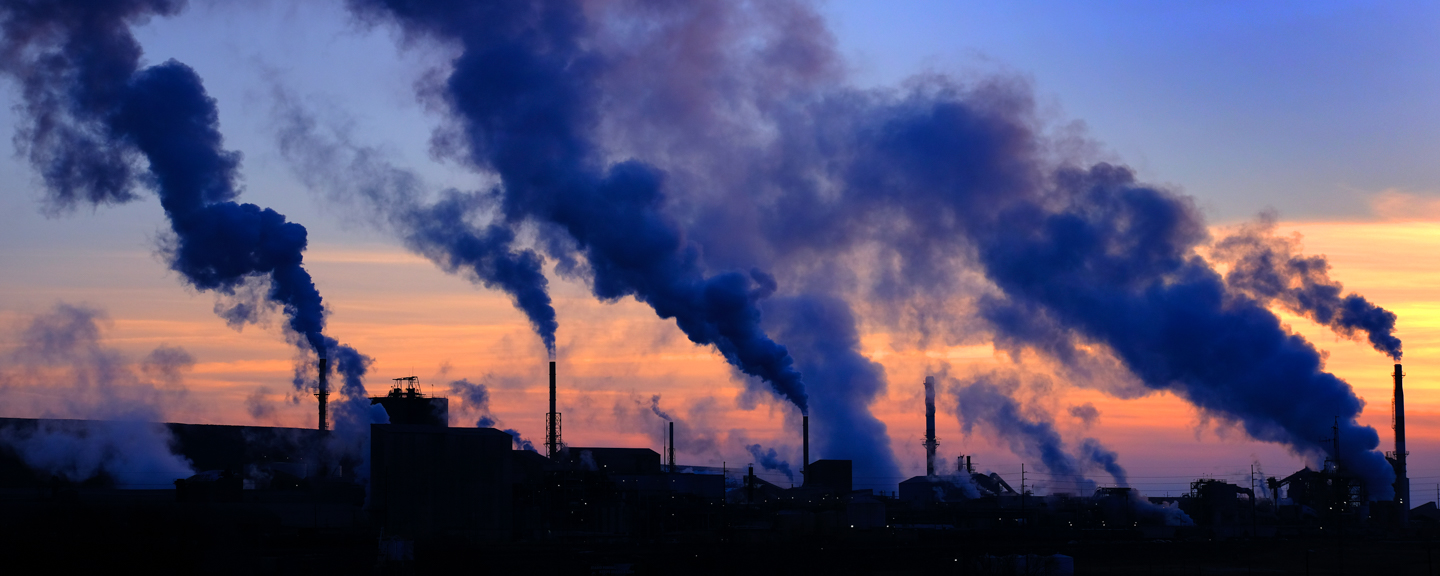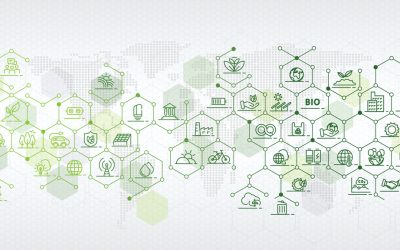
The planetary boundaries framework, first introduced in 2009 by Swedish scientist Johan Rockström and his colleagues, updated in subsequent assessments, provides a scientific basis for understanding and monitoring Earth’s critical biophysical thresholds. It emphasises the interconnectedness of Earth’s systems and the need for integrated management of resources to maintain the planet’s stability and resilience. Notably, some boundaries, like ozone depletion, have been effectively managed through international agreements like the Montreal Protocol, demonstrating that it is possible to reverse or mitigate human impacts on the planet.
What are planetary boundaries, the ramifications of breaching them, and the imperative for collective action to safeguard our planet’s delicate equilibrium?
Understanding Planetary Boundaries
Planetary boundaries encapsulate nine critical Earth system processes crucial for maintaining the stability of our biosphere. These boundaries are as follows:
Climate Change: The concentration of greenhouse gases in the atmosphere, particularly carbon dioxide (CO2), which leads to global warming and changes in weather patterns.
Biodiversity Loss: The rate of species extinction and ecosystem degradation caused by human activities such as habitat destruction, pollution, and overexploitation of natural resources.
Freshwater Use: The depletion and contamination of freshwater resources due to excessive consumption, pollution, and alterations of natural water cycles.
Ocean Acidification: The increase in acidity of the ocean’s waters due to the absorption of carbon dioxide from the atmosphere, which threatens marine life and ecosystems, particularly those reliant on calcium carbonate structures like coral reefs.
Ozone Depletion: The thinning of the ozone layer in the stratosphere, primarily caused by human-made substances such as chlorofluorocarbons (CFCs), leading to increased exposure to harmful ultraviolet radiation.
Aerosol Loading: The concentration of airborne particulate matter, including pollutants and aerosols, which can affect climate patterns, air quality, and human health.
Chemical Pollution: The release of synthetic chemicals, heavy metals, and other pollutants into the environment, which can have adverse effects on ecosystems, wildlife, and human health.
Land System Change: The conversion of natural ecosystems into urban areas, agricultural land, and other human-dominated landscapes, leading to habitat loss, fragmentation, and degradation.
Nitrogen and Phosphorus Flows: The excessive use and release of nitrogen and phosphorus fertilisers into the environment, contributing to eutrophication of water bodies, soil degradation, and disruptions to nutrient cycles.
These nine planetary boundaries encapsulate the critical environmental processes that must be safeguarded to ensure the long-term sustainability of human civilisation and the health of the planet.
Rockström’s pioneering work has shed light on the interconnectedness of these boundaries, emphasising that they do not operate in isolation. Instead, they interact synergistically, forming a complex web of ecological relationships. For instance, deforestation not only impacts the land system boundary but also exacerbates climate change and biodiversity loss. Recognising these interlinkages is crucial for crafting holistic solutions to mitigate environmental degradation.
Consequences of Crossing Planetary Boundaries
The consequences of breaching planetary boundaries are dire and far-reaching. Climate change, driven by greenhouse gas emissions, threatens to disrupt weather patterns, exacerbate extreme weather events, and inundate coastal regions through sea-level rise. Biodiversity loss, accelerated by habitat destruction and pollution, undermines the resilience of ecosystems, jeopardising essential services such as pollination, nutrient cycling, and carbon sequestration.
Crossing planetary boundaries can trigger tipping points, leading to abrupt and irreversible changes in Earth’s systems. These tipping points could result in cascading ecological disruptions, with profound implications for human societies. From food insecurity and water scarcity to heightened risks of pandemics and societal upheaval, the repercussions of crossing planetary boundaries are multifaceted and potentially catastrophic.
To date, humanity has crossed six of the nine planetary boundaries that define a safe operating space for us on Earth. These boundaries are thresholds beyond which the risk of destabilising the planet increases. The crossed boundaries include climate change, biosphere integrity (biodiversity loss), land-system change, the global phosphorus and nitrogen cycles (due to excessive fertiliser use), freshwater use, and the introduction of novel entities (such as plastics, chemical pollution, and radioactive materials) into the environment.
Crossing these boundaries signifies a significant increase in risk for destabilising Earth’s systems, which could lead to drastic changes or even catastrophic outcomes for humanity. For example, crossing the boundary for climate change elevates the risk of severe weather events, loss of biodiversity, and impacts on food and water security. Similarly, exceeding the boundaries for freshwater use and chemical pollution threatens the availability of clean drinking water and the health of ecosystems upon which we depend.
The Imperative for Action
In the face of such existential threats, there exists an urgent imperative for collective action to safeguard planetary boundaries. This necessitates a paradigm shift towards sustainability, guided by principles of stewardship, equity, and resilience. Governments, businesses, civil society, and individuals all have a role to play in this.
The implications of crossing these boundaries are profound, potentially affecting the Earth’s climate, ecosystems, and human societies in ways that are difficult to predict but likely to be disruptive and harmful. It underscores the urgency of addressing environmental challenges comprehensively, beyond just climate change, to ensure the health and stability of the planet for future generations. Actions to mitigate the impacts include reducing greenhouse gas emissions, protecting and restoring biodiversity, sustainable land and water use, and reducing pollution and waste.
Key strategies include transitioning to renewable energy sources, promoting sustainable land management practices, conserving biodiversity hotspots, and rethinking consumption patterns. Additionally, enhancing global cooperation and governance mechanisms is essential for addressing transboundary environmental challenges effectively.
As stewards of Earth’s fragile biosphere, we stand at a pivotal juncture in history. The concept of planetary boundaries serves as a sobering reminder of the finite nature of our planet’s resources and the urgent need for responsible stewardship. By heeding the warnings conveyed by Rockström and his colleagues, and by embracing a collective commitment to sustainability, we can navigate the boundaries of our planet and forge a more resilient and equitable future for generations to come.
References:
Rockström, J., et al. (2009). “A safe operating space for humanity.” Nature, 461(7263), 472-475.
Steffen, W., et al. (2015). “Planetary boundaries: Guiding human development on a changing planet.” Science, 347(6223), 1259855.
Rockström, J., et al. (2017). “A roadmap for rapid decarbonization.” Science, 355(6331), 1269-1271.
Waters, C. N., et al. (2016). “The Anthropocene is functionally and stratigraphically distinct from the Holocene.” Science, 351(6269), aad2622.
Stockholm Resilience Centre (2023) ‘All planetary boundaries mapped out for the first time, six of nine crossed’, Stockholm Resilience Centre. Available at: https://www.stockholmresilience.org/research/research-news/2023-09-13-all-planetary-boundaries-mapped-out-for-the-first-time-six-of-nine-crossed.html (Accessed: 7 April 2024).
Richardson, K., Steffen, W., Lucht, W., Bendtsen, J., Cornell, S.E., Donges, J.F., Drüke, M., Fetzer, I., Bala, G., von Bloh, W., Feulner, G., Fiedler, S., Gerten, D., Gleeson, T., Hofmann, M., Huiskamp, W., Kummu, M., Mohan, C., Nogués-Bravo, D., Petri, S., Porkka, M., Rahmstorf, S., Schaphoff, S., Thonicke, K., Tobian, A., Virkki, V., Weber, L. & Rockström, J. (2023) ‘Earth beyond six of nine planetary boundaries’, Science Advances, 9(37). DOI: 10.1126/sciadv.adh2458.
Scope 3 vs. Scope 4 Emissions in Business Sustainability: Understanding the difference
In the realm of business sustainability, understanding and mitigating greenhouse gas emissions have become paramount....
Scope 4 emissions: Addressing Upstream and Downstream emissions
In recent years, the conversation surrounding sustainability in business has expanded beyond just internal operations...
Understanding Emissions Scopes: What are scope 1, 2 and 3 emissions?
Understanding and effectively managing greenhouse gas emissions is essential in Business Sustainability. Emissions are...
Understanding Net Zero
In recent years, the concept of achieving "net zero" has gained significant traction in the realm of sustainability,...
Embarking on a Business Sustainability Journey: Key Steps to Get Started
In today's increasingly environmentally-conscious world, businesses are recognising the importance of integrating...
What is Business Sustainability? Building a Sustainable Future
Building a Sustainable Future: The Key Elements of Business Sustainability In today's world, the concept of...






